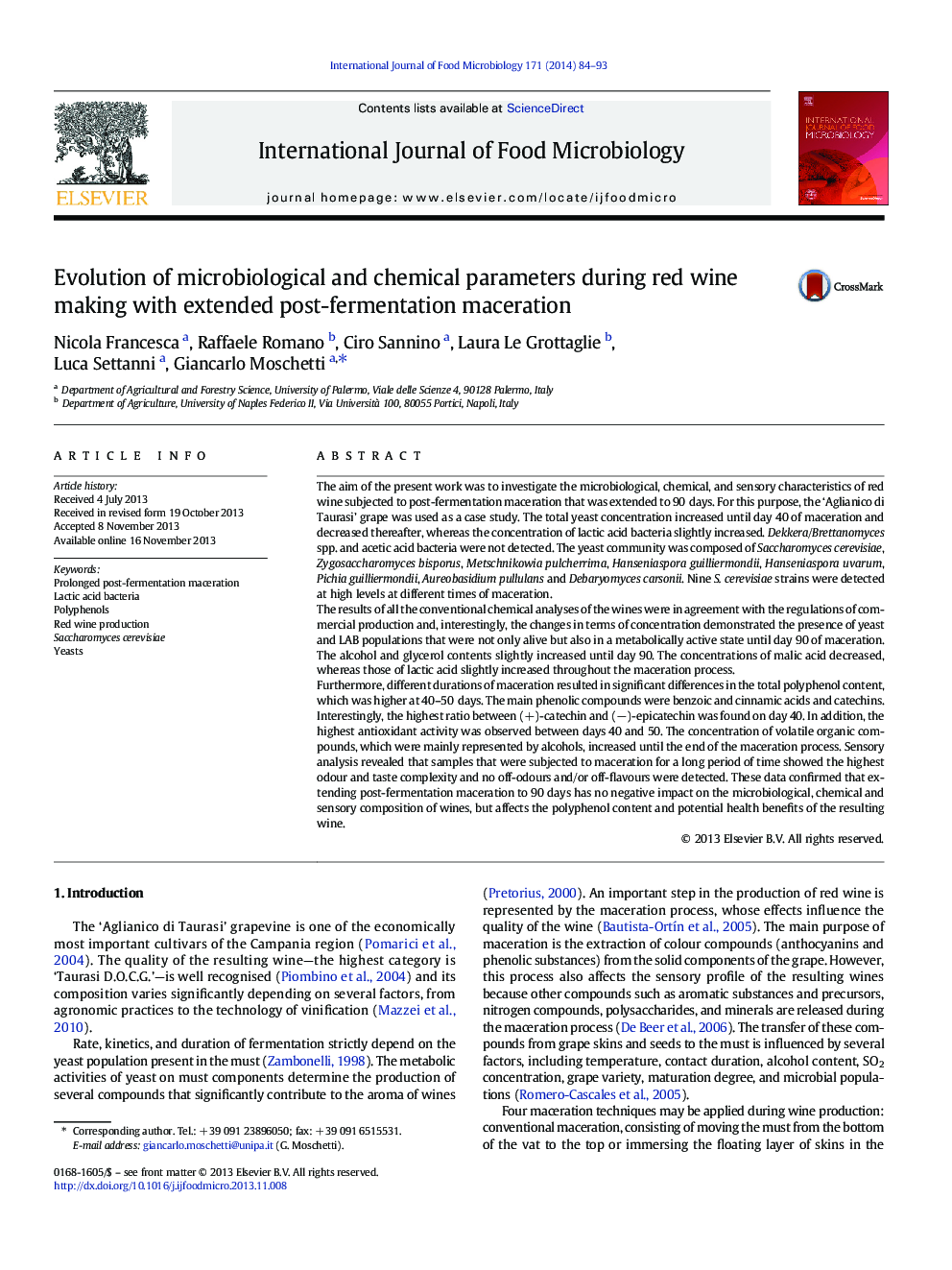| Article ID | Journal | Published Year | Pages | File Type |
|---|---|---|---|---|
| 6290070 | International Journal of Food Microbiology | 2014 | 10 Pages |
Abstract
Furthermore, different durations of maceration resulted in significant differences in the total polyphenol content, which was higher at 40-50Â days. The main phenolic compounds were benzoic and cinnamic acids and catechins. Interestingly, the highest ratio between (+)-catechin and (â)-epicatechin was found on day 40. In addition, the highest antioxidant activity was observed between days 40 and 50. The concentration of volatile organic compounds, which were mainly represented by alcohols, increased until the end of the maceration process. Sensory analysis revealed that samples that were subjected to maceration for a long period of time showed the highest odour and taste complexity and no off-odours and/or off-flavours were detected. These data confirmed that extending post-fermentation maceration to 90Â days has no negative impact on the microbiological, chemical and sensory composition of wines, but affects the polyphenol content and potential health benefits of the resulting wine.
Related Topics
Life Sciences
Agricultural and Biological Sciences
Food Science
Authors
Nicola Francesca, Raffaele Romano, Ciro Sannino, Laura Le Grottaglie, Luca Settanni, Giancarlo Moschetti,
